The A to Z of Shakespeare resources
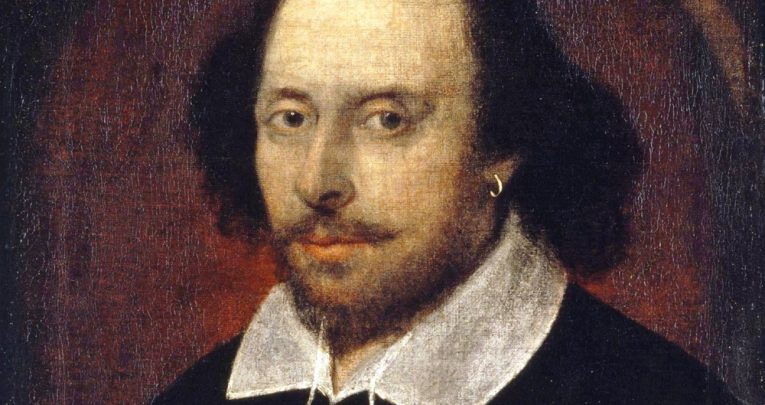
Delve into the Bard's stories, characters and locations, with this alphabetised selection of classroom materials from the BBC…

- by Teachwire
- Classroom expertise and free resources for teachers
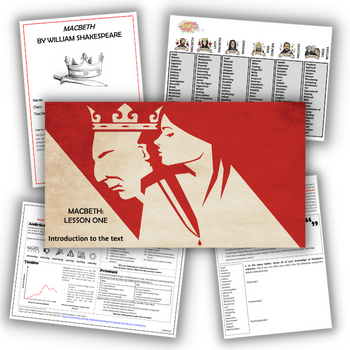
To mark this year’s 400th anniversary of William Shakespeare’s death, the Educational Recording Agency has helped us compile the following A to Z of Shakespearean people, places and and things.
Each entry entry points to one or more BBC-produced media clips, ranging from animations and news interviews to short films and radio documentaries. Beginning with…
A is for Ariel
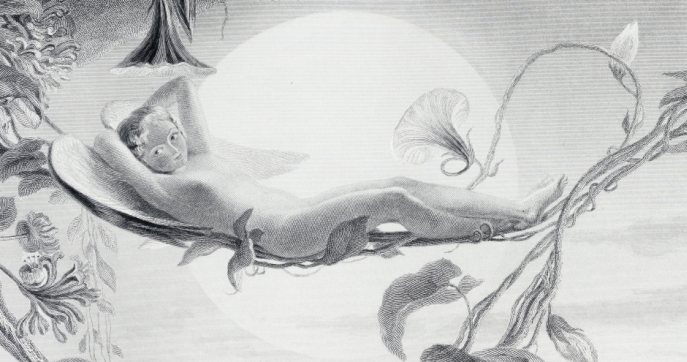
Ariel is the magic fairy, or “sprite” that Prospero calls upon to help him in The Tempest, the final play that Shakespeare wrote.
Prospero is the play’s lead character – a former duke of Milan now living on a faraway island with his daughter, Miranda, having fled there when Prospero’s brother, Antonio, claimed the city of Milan from Prospero for himself.
One night, a boat sets carrying Antonio and the King of Naples, Alonso, is shipwrecked upon the island during a violent storm, leaving the men stranded. It soon emerges that Prospero orchestrated the storm, using magical powers learned during his years of exile. The stage is thus set for a grand tale involving sorcery, wizardry and monsters…
Want to bring The Tempest to life for your primary class? Click here to watch an 8-part animated retelling of the play, and here [PDF] for a transcript of episode 1.
B is for Banquo
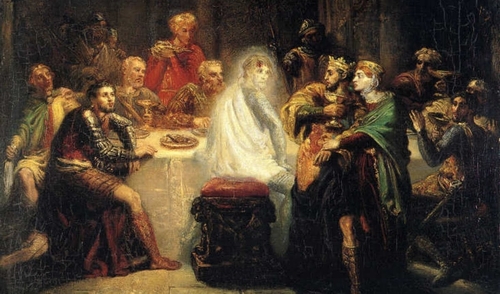
Banquo features in one of Shakespeare’s best-known plays, Macbeth. Banquo not only appears as a human in the story, but also as a ghost.
To begin with, he and Macbeth are good friends who have fought side-by-side in battle against their enemies. After successfully defending the kingdom of Scotland against invading forces from Ireland and Norway, the two men are traversing a deserted moor at night when they encounter three witches who prophecise that Macbeth will one day become King.
Fearing that Banquo’s descendants will come to rule the throne rather than him, Macbeth has Banquo killed – but is later surprised to find himself haunted by Banquo’s ghost later on in the play.
C is for Coriolanus
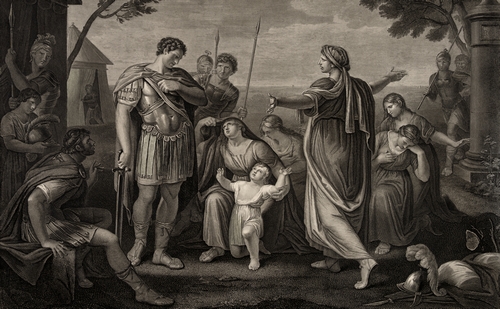
Coriolanus is the main character in a Shakespearean tragedy play of the same name, based on a Roman leader called Caius.
He was a Roman general who successfully challenged the government in Rome and went on to become involved in politics following encouragement from his mother. When he faces opposition to his plans, however, he flees Rome to live in exile, later returning to seek revenge upon his enemies. Although his wife and mother are able to talk him out of destroying Rome, his opponents succeed in ultimately killing him in the end…
To better understand Coriolanus, listen to Josie Rourke, artistic director of the Donmar Warehouse discuss her recent production of the play on BBC Radio 4’s Start The Week.
For a more contemporary version of Shakespeare’s political thriller, here’s the trailer for the 2011 film adaptation directed by and starring Ralph Fiennes…
D is for Desdemona
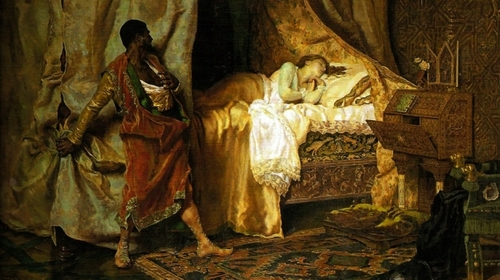
Desdemona features in Shakespeare’s Othello. A true Venetian beauty, and a real daddy’s girl, one day she meets Othello – a Moorish general in the Venetian army – and falls madly in love with him.
They marry in secret, against the wishes of Desdemona’s father Brabantio. Soon after, Othello is summoned to Cyprus to defend the island against an invasion by Turkey. Desdemona accompanies him there.
Unbeknownst to the new couple, one of Othello’s military colleagues, Iago – resentful at being passed over for promotion – has become obsessed with discrediting Othello, and concocts an intricate plan to convince him that Desdemona has been unfaithful. She protests her innocence, but is eventually killed by her husband.
Othello, subsequently discovers that she had, in fact, been faithful all along, takes vengeance on Iago but mortally wounding him. Othello and Iago are arrested for their crimes – but rather than return to face trial in Venice, Othello opts to take his own life, using a concealed sword.
To get started on Shakespeare’s Othello, watch this animated BBC Bitesize clip covering the key highlights in Act 1.
E is for Elsinore

Elsinore isn’t a character; rather it’s the setting in which Shakespeare’s Hamlet unravels.
Elsinore is a royal Danish castle more commonly known as Kronborg. It is one of the most important Renaissance castles in Northern Europe and was added to UNESCO’s World Heritage Sites list in 2000.
In this BBC Bitesize clip, Elsinore is reimagined as a modern dictatorship for a National Theatre production.
F is for Falstaff
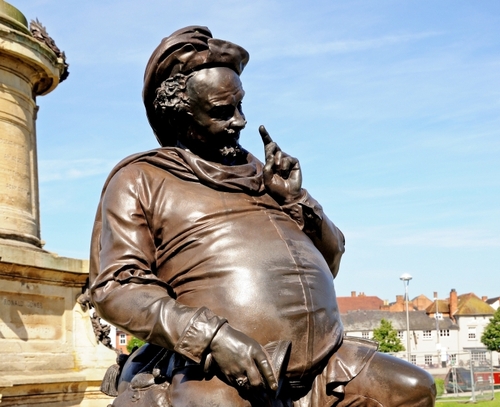
Sir John Falstaff is one of the most famous comic characters in all English literature. He appears in four of Shakespeare’s plays – Henry IV Part 1, Henry IV Part 2, Henry V, and The Merry Wives of Windsor.
His death is mentioned in Henry V but he has no lines, nor is it directed that he appear on stage. However, many stage and film adaptations have seen it necessary to include Falstaff for the insight he provides into King Henry V’s character.
Sir John Falstaff is said to be based on a real life solder called Sir John Oldcastle. However, after protest from Oldcastle’s descendants, Shakespeare was forced to change his name.
In this fantastic BBC Arts clip, you can see the Hollywood actor Orson Welles portray Sir John Falstaff’s character.
G is for Gertrude
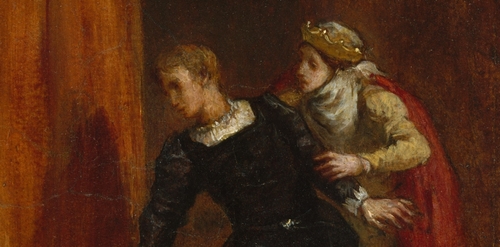
In Shakespeare’s play Hamlet, Gertrude is Hamlet’s mother and the Queen of Denmark.
When Gertrude’s husband, the King of Denmark, is murdered by his own brother Claudius, Gertrude marries Claudius, much to Hamlet’s distaste. Mother and son are emotional opposites, with Gertrude caring for court life whilst Hamlet, a scholar and philosopher, searches for life’s most elusive answers.
Check out this brief introduction to Gertrude’s character on the BBC website.
H is for Prince Hal
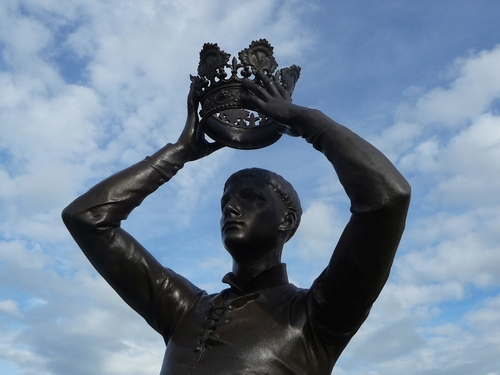
Prince Hal was the name often used to refer to Henry, Prince of Wales, who later came to the throne as King Henry V. He was also known as ‘Harry Monmouth’ – a fictional character based on the monarch.
Henry IV depicts Prince Hal as a riotous and rebellious individual who spends time with vulgar and lowlife peasants and creates tension within the family, especially between himself and his father.
However, critics have continued to debate to what extent the Prince’s behaviour was authentic as opposed to calculated. The BBC provides us with this clip where Prince Hal is played by Tom Hiddleston, who’s hotly rumoured to be the next James Bond…
I is for Iambic Pentameter

Iambic Pentameter is one of the most important technical phrases to remember when it comes to poetry and writing, describing a rhythmic way in which lines are written.
There’s a great definition here on Schmoop – put simply, it sounds like ‘baDUM. Repeat that rhythm five times, and you have iambic pentameter – ‘baDUM, baDUM, baDUM, baDUM, baDUM…‘
To help get your head around the concept, check out this BBC exercise where students recite their birthdays in iambic pentameter.
J is for Juliet
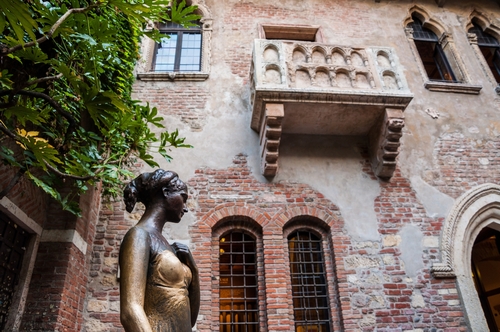
Romeo and Juliet is one of the most famous – and most tragic – love stories ever written. Juliet is an only child to Lord and Lady Capulet. Aged just 13, her character experiences a host of intense emotions over the course of the play, moving through love, passion and romance, as events conspire to lead to her untimely death.
We see Juliet start out as being somewhat naïve, before later evolving into a more headstrong, intelligent and complex character. In this BBC clip, actors Mariah Gale and Sam Troughton explore ‘what’s in a name’ and the feelings behind Juliet’s soliloquy (teacher viewing recommending prior to showing in class).
Browse more Romeo and Juliet KS3 and KS4 resources.
K is for King Lear
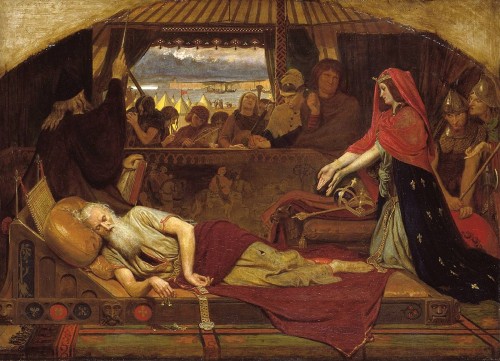
King Lear is the titular character of one of Shakespeare’s great tragedies. Crowned the King of Britain, in his old age he decides to step down and divide his realm amongst his three daughters – Goneril, Regan and Cordelia.
The King promises to give the largest share of his estate to the daughter who loves him the most, inviting each daughter to declare their love for him. Dissatisfied with Cordelia’s response, King Lear disinherits her and divides his realm amongst Goneril and Regan. It later transpires that their love was fake, with both describing their father as a foolish old man.
There then unfolds a tale of deceit, madness, battles, imprisonment and suicide, that involves the death of virtually all of the play’s main characters – as discussed by Melvyn Bragg and guests in this downloadable 45-minute episode of the radio series, In Our Time.
L is for Lady Macbeth
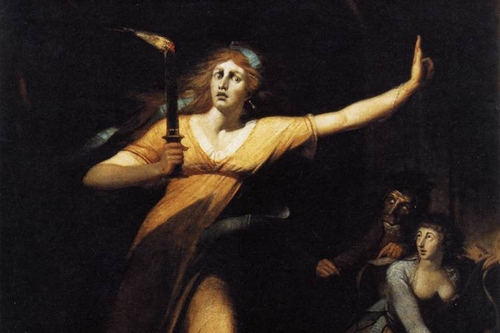
Lady Macbeth is the wife of Macbeth – a character portrayed in the play as being cold hearted, and the main motivator behind Macbeth’s murder of the King (which results in her becoming Queen).
In one of play’s most famous scenes Lady Macbeth is shown consumed by guilt, walking and talking to herself about the events that have led her to where she is. The scene seems to illustrate, however, that while she does feel genuine remorse about her actions, her mind is also starting to unravel.
In this short video clip, Louise Lombard looks at how Lady Macbeth is perceived and challenges the negative portrayal of her character.
M is for Malvolio
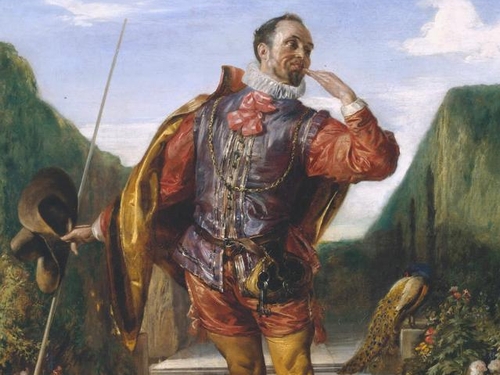
Malvolio is the steward of the main household in Shakespeare’s comedy, Twelfth Night. He is a sombre man who emphasises the importance of dignity, decency, decorum and good order – yet he abandons such values when he thinks that the Lady of the house, Olivia, might be interested in him romantically.
This, of course, is a prank and he is the victim of a cruel joke. He transforms into an utter fool, displeasing Olivia and earning himself in a short spell in priison. Upon on his release he swears revenge on the culprits, as Olivia acknowledges that he has been “notoriously abused”.
This short video clip featuring Nigel Planer – best known for his role in the cult BBC comedy, The Young Ones – looks at the motivations behind Malvolio’s complex character.
N is for “Now is the Winter of Our Discontent”
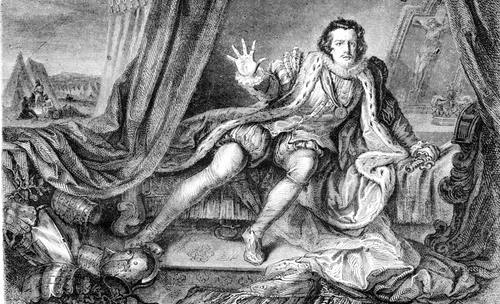
One of the most famous lines from Richard III, the term ‘winter of discontent’ has long been part of our popular consciousness. One of its most famous uses is in connection with the public sector trade union strikes that took place in late 70s – though in this context, it typically refer to the actual season of winter between 1978 and 1979.
In this clip, actor Sir Antony Sher – who won an Olivier award for his performance of Richard III at the Royal Shakespeare company during the 1980s – performs the monologue for the BBC’s Today programme.
O is for Othello
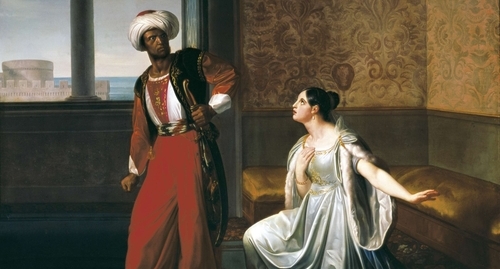
Othello is a military general who has overcome challenges and difficulties to become known as a ‘valiant’ man and one of the most respected officers in the Venetian Army. Originally from Africa, he experienced separation from home and family at an early age, followed by a life of dangerous and unpredictable adventures.
In the eponymous play we see him win the heart of Desdemona – yet believes her to be too good for a man like him, still considered an outsider due to his background and the colour of his skin. His insecurities ultimately get the better of him, when he is misled into believing that his beloved Desdemona has cheated on him. Taking this to be true, he condemns her and smothers her to death.
In this downloadable Radio 3 documentary, entitled Looking for Moor, British-Ghanaian actor Hugh Quarshie explores whether Shakespeare actually knew any black people, and considers the possibility of Othello’s persona as being derived from literary and theatrical convention. He suspects that if Shakespeare had indeed little or no awareness of black people, then his characterisation of Othello could be regarded as lazy – an interesting point for discussion.
P is for Puck
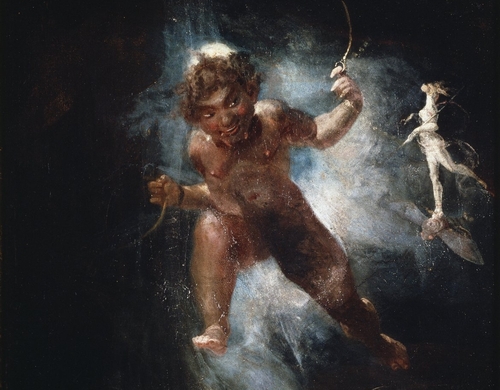
Puck, also known as Robin Goodfellow, is a fairy that appears in A Midsummer Night’s Dream.
Jester to Oberon and Titania – King and Queen of the Fairies – Puck is a powerful supernatural creature. Unlike other fairies under Oberon’s control, Puck is mischievous and enjoys playing practical jokes on humans. He even goes so far as to bring an element of danger to the fairy world, invoking damned spirits and pitching individuals against each other.
If your students would enjoy watching a fairies scene, you could play them this clip of Royal Shakespeare Company actors portraying the scene in which Oberon and Titania meet for the first time. Alternatively, you can browse through this assortment of class clips that explore the play’s various characters and themes.
Q is for Quotes

Whilst the total number of words coined by Shakespeare is hotly debated, his impact on the English language is undeniable. As well as creating numerous words still in use today (including ‘swagger’ and ‘lonely’), his plays and sonnets are the source of numerous well-known phrases and idioms – some comedic re-interpretations of which you can see in this short CBBC clip…
R is for Romeo
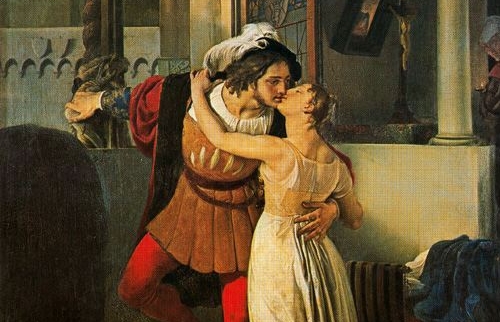
Romeo’s name is associated the world over with love. A young man living in Verona, he’s a member of the powerful House of Montague, which has been locked in a fierce and deadly rivalry with the House of Capulet.
The play’s tragic events are set in motion when he falls madly in love with Capulet’s young daughter, Juliet, experiencing true love for the first time, rather than the superficial crushes he’s shown to have had for other girls up until then. These new and intense emotions drive him to take risks to see Juliet – even in the afterlife. At the climax of the play, we see him take his own life, upon discovering what appears to be Juliet’s lifeless corpse…
Having heard above from Juliet, we now turn to Romeo’s soliloquy in this short BBC video clip featuring actor Sam Troughton.
S is for Shakespeare
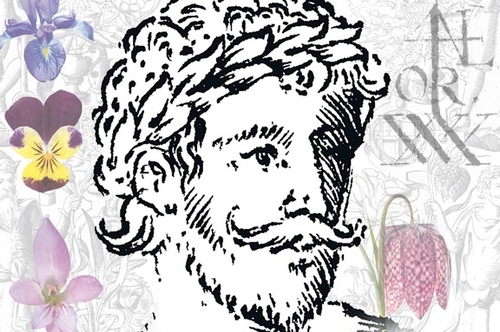
Shakespeare himself was born in Stratford-upon-Avon, Warwickshire, in 1564 and died on 23 April 1616 at the age of 52 – now 400 years ago. Little is known about his upbringing, including his real date of birth – but, by 1592, he was working in London both as an actor and a dramatist.
His writing career spanned almost 25 years, throughout which he wrote at least 37 comedies, tragedies, romances and histories, whilst collaborating with other writers on even more. At the age of 18 he married the 26-year-old Anne Hathaway, who gave birth to three children, including twins.
His works were not always revered at the time; it’s said that he was once told he wasn’t as good as other contemporary writers who had studied at university. Shakespeare nevertheless continued with his writing and went on to become arguably the world’s most celebrated writer.
Last year, an engraving came to light that was thought to be the only portrait of the Bard drawn in his lifetime, as shown above. The image at the very top of this article, meanwhile is known as the Chandos portrait, and was the first painting to be added to the National Portrait Gallery’s collection where it hangs to this day – though whether it actually shows Shakespeare, and even who painted it, has never been conclusively proved.
The BBC have created an incredible archive of Shakespeare programmes which can be accessed by educational establishments.
T is for Tempest

The Tempest opens in the midst of a storm, as a ship containing the King of Naples and his party struggles to stay afloat. On a nearby island, Prospero and his daughter Miranda watch the storm unfold – a storm which Prospero deliberately created through magic, because said ship is carrying his enemies.
12 years earlier, Prospero and Miranda had been banished to the island when Prospero’s younger brother, Antonio, stole his Kingdom. The royal party ends up being cast ashore on the island and soon find themselves confronting a Prospero bent on revenge, retribution and retaking the throne that’s rightfully his.
Here again is broadcaster Melvyn Bragg, exploring the themes and characters of The Tempest with studio guests in an episode of In Our Time.
U is for Ursula
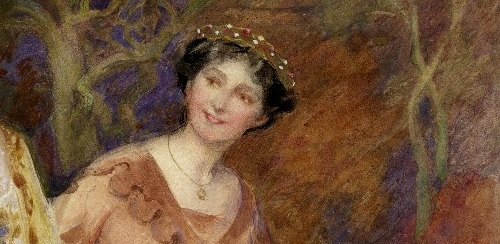
Ursula is a character in one of Shakespeare’s most popular comedies, Much Ado About Nothing.
The play focuses on two love stories that are intertwined. The first is between young Hero – the daughter Messina’s governor, Leonato – and Claudio, a soldier recently returned from war. The second is between Beatrice and Benedick, who both spend most of the play teasing each other and declaring that neither of them will ever marry anyone, let alone each other.
Ursula is one of Hero’s maids, and plays a small role in the humorous love story that develops between Beatrice and Benedick.
If you’re searching for broadcast material to help explain the play’s themes of appearance and reality to a primary school audience, try this clip. If you’re looking for classroom ideas to teach this play to a secondary school audience, check out this resource.
V is for Viola
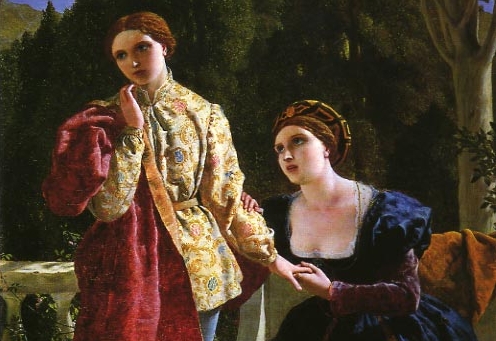
Viola is the leading woman in Shakespeare’s Twelfth Night and often considered one of the Bard’s most charming, sweet and witty female characters.
Orphaned as a child and separated from her twin brother following a shipwreck, she finds herself abandoned on an island in search of refuge. Disguising herself as a man and adopting the name Cesario to ensure her safety and freedom of movement across the land, she eventually secures employment with Duke Orsino. A complicated love triangle between Viola, Duke Orsino and Lady Olivia then ensues, with the latter falling for Viola’s male disguise. The story takes an expected twist, however, when Viola’s twin brother arrives safe and well on the island.
Teachers may find this 3-minute animated plot summary a helpful resource to keep on hand. If you’re after some cross-curricular ideas, here’s a discussion between chef Nigel Slater and Professor Ronald Huttonand on the origins of the famous Twelfth Night cake.
W is for Witches (or Weird Sisters)
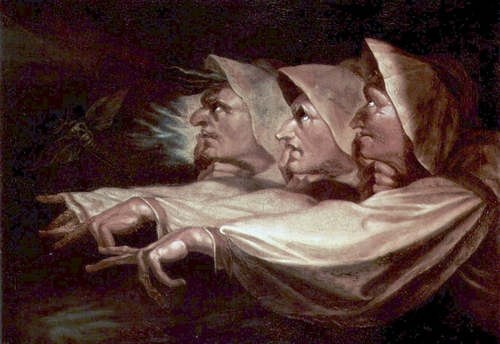
The three witches are central characters in Macbeth – though in this instance, the reference to “weird” doesn’t mean ‘strange’. It actually comes from the Anglo-Saxon ‘wyrd’, meaning ‘destiny’ or ‘fate’. In this sense, the witches can therefore be seen as prophets telling Macbeth of his future.
At the start of the play, they tell Macbeth that he will one day become King, planting in him the idea of killing the present Monarch. Later, however, he overhears the witches talk of his impending downfall. The appearance of the witches sets a dark and ominous tone for the rest of play, representing evil, darkness and conflict.
This clip allows you to explore with students the significance of the witches and the various ways in which they might be played.
X is for X-Factor

Whilst Shakespeare didn’t enter any singing contests (at least that we know of)! it’s hard to deny his lasting influence on our culture, which makes him someone special. 400 years on from his death we’re still telling his stories, performing and adapting his plays, and wooing each other with his sonnets.
In this BBC News clip, Sir Ian McKellen discusses the impact of Shakespeare on our culture.
Y is for Yorick
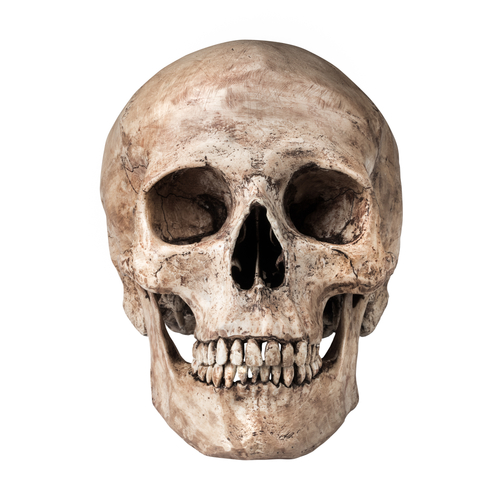
Yorick lends his name to one of the most well-known phrases to emerge from a Shakespeare play: the words “Alas, poor Yorick; I knew him, Horatio”, as spoken by Hamlet.
Yorick was, in fact, a fictional character. He was a dead court jester whose skull was exhumed by a gravedigger in the first scene of the play. Upon seeing this, Hamlet launches into a monologue on mortality.
Interestingly, pianist André Tchaikowsky donated his skull to the Royal Shakespeare Company for use in theatrical productions, hoping that it would one day be used as the skull of Yorick.
Here you’ll find a plot summary of Hamlet delivered by Jack Whitehall, whilst in this 30-minute radio documentary you can hear about Maxine Peake’s experience of playing Hamlet, from her initial research meetings and vocal sessions to sword fight training and character preparation.
Z is for Zany

In the course of writing his comedy plays, Shakespeare had a hand in introducing the word ‘zany’ to English audiences in Love’s Labour’s Lost.
The way we think of and define comedy now is very different to how it was understoood in Elizabethan times. The style of a Shakespearean comedy is typically light-hearted, with a story that usually ends with a wedding. They also often involve characters wearing disguises and cases of mistaken identity.
In this clip, actors discuss the language of comedy and the nature of comic timing in relation to A Midsummer Nights Dream.
Celebrating the 400th anniversary of the death of Shakespeare. This A to Z is brought to you in partnership with ERA – enhancing the learning experience.
Browse our Shakespeare Week resources.










